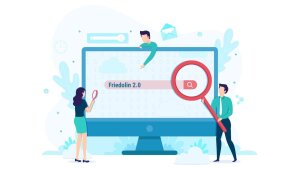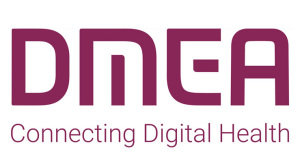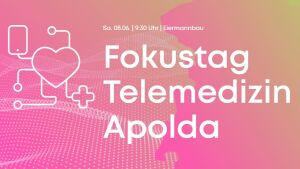
Additional evaluations can be found at the evaluation platform StudycheckExternal link.
-
Use of digital learning formats in medical institutions - acceptance factors for e-learning formats from the learners' perspective
submitted by: Donatha Hornemann
supervised by: Prof. Dr. med. Jutta Hübner; Sarah Salomo
Background: In order to make digital learning both efficient and attractive for users in the future, it is necessary to investigate acceptance factors. The relationship between e-learning acceptance and digital health literacy will also be relevant in the future in order to be able to support learners in searching, finding and evaluating e-learning. The aim of this paper is to identify the acceptance factors for medical workers who are no longer in an educational relationship and to relate it to eHealth Literacy.
Method: In the period from March 25 to April 30, 2022, the online survey of employees of medical institutions, with completed vocational training, on the acceptance of digital learning opportunities and eHealth Literacy took place. To assess acceptance, questions were designed based on research on attitudinal, usage, and behavioral acceptance. The eHEALS was used to measure digital health literacy.Results: A total of 241 online questionnaires were included in the analysis. In particular, the characteristics of prior experience, occupational group, and literacy showed significant positive correlation in many items. The effect size was mostly moderate (r = 0.3 - 0.5). For age and gender, a correlation could only be shown in relation to accessing the digital learning platform. Time flexibility was identified as the greatest advantage and the absence of a teacher as the greatest disadvantage. In almost all items, there was a significant positive correlation to digital health literacy (p ≤ 0.05).
Discussion: prior experience, occupational group, and literacy often have a relationship to e-learning acceptance. There is a particularly strong relationship to eHealth Literacy. This work on the acceptance of digital learning methods by health care workers who have completed professional training is a first approach to answering the research questions. However, further work with the described clientele must follow. -
Use of artificial intelligence in teleradiology: a demand analysis for potential support during diagnostic assessment.
submitted by: Nadja Müller
supervised by: Prof. Dr. Cord Spreckelsen; Sandra Niemz
The aim of this scientific work is to analyze the need for artificial intelligence (AI) applications in teleradiology during diagnostic assessment and to determine areas of application for AI. Therefore, the following research question is posed: "Which application areas are suitable and which criteria must AI applications fulfill in order to optimally support the process of teleradiological diagnostic assessment?" To answer the research question, a systematic literature review and qualitative content analysis were conducted. In total, five teleradiologists and two AI vendors were interviewed about their needs for AI applications in the teleradiology reporting process. An important part of the qualitative content analysis was to filter out which criteria must be met for teleradiologists to use AI in their process of reporting in a supportive manner. The results of the analysis indicate that there is a need for AI applications in the teleradiology reporting process. Nevertheless, the criteria for use during reporting are uncertain and depend on external factors. It can be seen that different areas of application are possible and, based on the frequency of examinations and the complexity, application scenarios for possible AI applications can be derived.
-
Telerehabilitation in acute stroke care - A needs assessment in a telemedical stroke network in Southeast Bavaria.
submitted by: Annina Munk
supervised by: Prof. Dr. Cord Spreckelsen; Sven Festag
Introduction: The increasing demand for occupational therapy in acute stroke care and the simultaneously declining supply of occupational therapy services in rural areas endanger the sustainable success of stroke therapy. The aim of this study is to assess and evaluate the demand and the requirements for a telerehabilitative occupational therapy service for stroke patients in the TEMPiS network.
Method: To assess needs, a questionnaire survey was conducted in the 24 partner hospitals of the TEMPiS network to determine occupational therapy capacity, as well as the number of existing monitor and non-monitor beds. In addition, quality figures from the BAQ data sets were used. Using these data, two clinics were selected based on a decision matrix in which nine guided interviews were conducted with individuals from the following stakeholder groups: Physicians, occupational therapists, nurses, stroke patients, and IT staff.
Results: A need was assessed in 18 of the 24 partner hospitals (N=22). Deficits exist especially in the supply of the non-monitor beds of the follow-up wards and on weekends and holidays. In the two clinics surveyed, differences in expected implementability resulted from differences in human resources, as well as existing and changing organizational conditions. For the users, the content of the service and the required framework conditions were important, while the specialists in the clinics placed great value on the link to the existing daily routine in the wards and the exchange of information. The IT expert also mentioned important requirements for promoting interoperability with existing IT networks. -
Chances and risks in the implementation of the telematics infrastructure in diabetology practices of primary care in the Augsburg area. Use, benefits and application with a focus on digital networking with other service providers
submitted by: Christiane Kunder
supervised by: Prof. Dr. Johannes Ruhland; Sven Gehrke
Introduction: The telematics infrastructure (TI) is used for the fast and secure exchange of information and data in the healthcare sector. Planning and implementation of TI has been very slow for a long time and has only picked up speed in recent years, with time targets rarely being met.
Method: Risks and opportunities in the implementation of the TI were explored by means of a qualitative survey. The interview partners were two IT service providers, a project manager from a hospital, a pharmacy manager, and seven physicians in private practice from the Augsburg area. The questionnaire and the evaluation were based on the seven COBIT success criteria for the use of IT in companies. The studies aimed to assess risk minimization, benefit realization and resource optimization of the TI implementation among the study participants.
Results: To achieve the goal of fast and secure data exchange, responsibilities must be clarified and non-specialist activities reduced. In addition, stable, reliable and up-to-date technology and a centrally managed telematics infrastructure are needed. This ensures that the main focus of the medical players remains on the interests of the patient. Neutral to negative responses predominated in the evaluation. This is in line with the current survey results of the German Association of Statutory Health Insurance Physicians (Kassenärztliche Bundesvereinigung) in 2022, which criticized the high personnel and financial costs involved with hardly any added value to date. The so far uncoordinated approach of the legislator and gematik, as well as the susceptibility to failure of the technology in use, led to uncertainty among the participants. It turned out that competencies and responsibilities were not clearly defined. -
How can current approaches to prehabilitation before elective surgery be app-based / digitally supported? An evidence-based needs assessment.
submitted by: Tobias Schäfer
supervised by: Prof. Dr. Cord Spreckelsen; Thomas Weidauer
Introduction: The topic of prehabilitation of patients prior to visceral oncology surgery has been gaining popularity in recent years. Today, multimodal prehabilitation includes preoperative structured exercise, nutritional optimization, psychological support, and ending negative health habits. The opportunities of location-independent, digital prehabilitation services are becoming increasingly clear, especially in light of the Corona pandemic. There are an increasing number of corresponding offers worldwide.
Method: We identified three key stakeholders on the topic of app-based prehabilitation prior to elective surgery and interviewed them in focus groups: Focus group A: Potential patients; Focus group B: Physicians; Focus group C: IT workers. We used a mixed methods approach with exploratory design. A qualitative survey of the focus groups was followed by a quantitative survey to validate the results and requirements. The qualitative, first survey of the focus groups A-C was conducted online between June and August 2022. 3 representatives per focus group were interviewed with open questions about digital prehabilitation. The quantitative, second survey of the focus groups A-C took place online in September 2022. 10 representatives per focus group were confronted with the findings and the requirements of the previous groups.
Results: Potential patients and IT staff are open to independent, digital / app-based prehabilitation. The physicians surveyed consider prehabilitation to be effective and useful in principle, but identify many challenges in the digital format. Additional structures are needed for development and implementation, e.g., a prehabilitation team that is responsible for the technical and content-related support of digital solutions. Potential patients attach great importance to the user-friendliness of the app. The technical implementation of a prehabilitation app appears to be less problematic to IT specialists than the development of evidence-based, content-related guidelines, which form the basis for individualized training, nutrition or meditation recommendations for an app. Data protection and risk management are relevant topics across all groups.
Translated with DeepLExternal link -
An empirical application of requirements engineering in the field of digital documentation of discharge management in the hospital information system.
submitted by: Pia Mayerhöffer
supervised by: Prof. Dr. Johannes Ruhland, Sven Gehrke
Introduction: As part of an empirical application of requirements engineering, needs of all identified stakeholders for digital documentation of discharge management in the hospital information system were identified, analyzed, specified, and validated. The focus here was on the user requirements of hospital employees in discharge management.
Fragestellung: To what extent can a process standard of discharge management with the respective responsibilities be modeled in a universally valid way? What are the requirements for digital documentation of discharge management in the HIS?
Methode: The structure of the work was based on requirements engineering. A literature review and a stakeholder analysis served as the basis for eliciting, analyzing, specifying, and validating the needs and requirements of the stakeholders using various methodologies. Six open interviews with stakeholders of the HIS manufacturer and a literature-based process analysis resulting in a RACI matrix and a process modeling according to BPMN were conducted. In addition, nine semi-structured interviews based on the previous results were conducted with the stakeholder group of users, which were evaluated by means of a qualitative content analysis to derive recommendations for action for the HIS manufacturer.
Results: A generally applicable modeling of a process standard in discharge management is not possible, since deviations in the process steps and responsibilities in discharge management could be identified between the hospitals. There are several requirements for the digital documentation of discharge management in the HIS, which could be divided into six categories and compiled in a requirements document. All process steps should be documented in an interdisciplinary documentation page and it should be possible to transfer data already available in the HIS. Documents and applications should be stored as writable documents in the HIS. Scores, such as BRASS Score and ePA, should be used as initial assessment in the HIS and transferred to the documentation page. Work and evaluation lists should be able to be used with various filters. In the future, mobile documentation of discharge management should be possible on the tablet. The possibility for clinic-specific adaptations should remain.






